Kimchi mandu are the best! Crispy on the outside and moist on the inside, these spicy and smoky Korean dumplings pair beautifully with a cold glass of beer or hot sake.
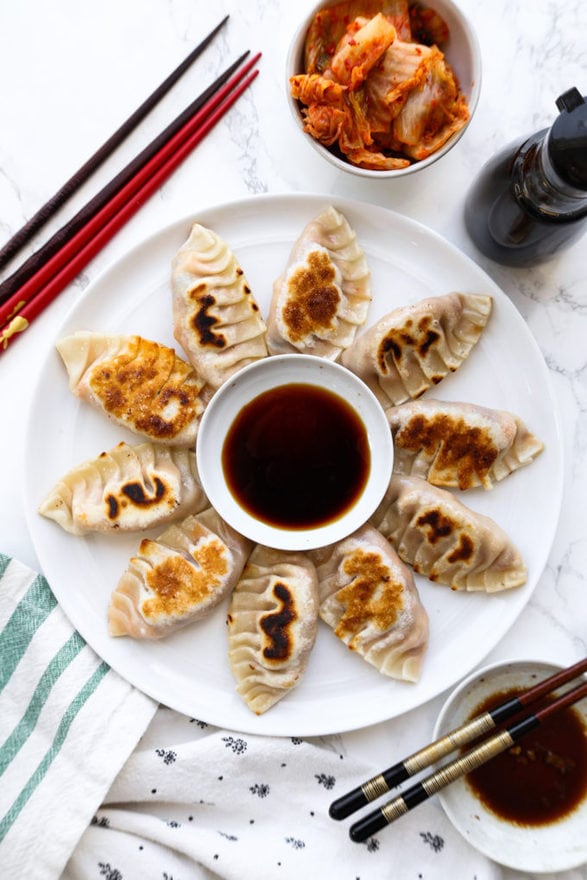
Last week I made Chinese mushrooms and cabbage dumplings and this week I’m introducing you to its Korean cousin, the kimchi and tofu mandu!
You are probably thinking “is she on a dumpling spree or what?” and that’s absolutely correct! When it comes to making dumplings, I always make sure to make a lot in one cooking session. What’s great about dumplings is how well they freeze so you can make a huge batch and save some for later.
And because most dumplings are quite similar in preparation, you can easily make gyoza, jiaozi and mandu in one afternoon and have enough to last you for months!
What is Mandu?
Mandu is the Korean version of Chinese jiaozi or Eastern European pierogi. It’s served during the Korean Lunar New Year festivities in a soup along with some rice cakes, to symbolize good luck for the coming new year. The dumplings are also served as a side dish or a snack to enjoy with late night drinks.
The mandu recipe I have for you today is vegetarian but feel free to switch the tofu for another protein such as chicken or shrimp.
Different Types of Mandu
There are several types of mandu available with variations on their fillings and preparations. Some of the most popular ones are:
- Gun-mandu (군만두) – pan fried dumplings (the ones I’m showing you how to make in this post).
- Mul-mandu (물만두) – boiled dumplings.
- Jjin-mandu (찐만두) – dumplings steamed in a bamboo steamer.
- Tuigin mandu (튀긴만두) – deep fried dumplings.
- Wong mandu (왕만두) – shaped like a bun and filled with pork and vegetables.
- Yachae mandu (야채만두) – dumpling filled with vegetables.
- Kimchi mandu (김치만두) – do I really need to translate this one?
- Saewu mandu (새우만두) – dumplings filled with shrimp.
Ingredients for Mandu
- Dumpling wrappers: I’m using pre-made dumpling wrappers which you can buy at Asian grocery stores in the frozen section. Use the regular size ones which are about 3.5 inches in diameter.
- Oil: Since we are pan frying these dumplings we will need a little oil to add to the pan to give them a crispy texture and a golden brown color.
- Water: Adding water to the pan while the dumplings are cooking keeps them moist and tender.
- Tofu: I’m usually a silken tofu girl but for this recipe it’s important to use the firm kind. That’s because tofu has a high water content and since we are using it as part of the filling we want as little of it as possible.
- Kimchi: You can use store bought kimchi or make a vegan version yourself – check out my recipe for vegan kimchi here!
- Egg: You can skip the egg if you want to make these mandu vegan. The egg adds a little extra flavor and texture to the filling.
- Scallions: I love scallions! To me, Asian food is always better with some chopped scallions used either in the dish or as a topping. The pungent and sweet flavors of green onions are hard to beat.
- Garlic: Garlic is another quintessential ingredient to Asian cooking. It adds pungency and well, Asian food is always better with a little kick of it!
- Sesame Oil: A touch of sesame oil to add nuttiness to the filling.
- Gochugaru: Korean red pepper flakes have a nice smoky flavor that pair beautifully with stinky kimchi and tofu.
- Salt and pepper: To balance the flavors. Add as needed.
How to Make Mandu
- Mix all the ingredients for the filling in a bowl and add it to a skillet. Cook on medium heat for 5-7 minutes, transfer the mixture to a bowl and let it cool to room temperature.
- Grab a wonton wrapper and hold it near the palm of your hand.
- Scoop about 1 tablespoon of the kimchi tofu filling and place it in the center of the wrapper.
- Store bought wrappers are dry so you will need to wet the edges to make the dough stick together. Wet you index finger and run it along the edges of the wrapper.
- Fold the wrapper into a half moon and pinch the edges together. The part of the wrapper that is in the palm of your hand stays flat the whole time, it never gets pinched. Pinch the other side until you get a fan like shape, pressing it against the flat side of the wrapper after each pinch. Repeat this step until all the mandu are done. Please refer to the step-by-step photos above for more details.
- Use a large skillet over medium high heat and add a little oil to coat the pan. Place the mandu, flat side down, making sure to leave enough space between them so they don’t stick together. You may need to do this in batches.
- Add the water and cover with a lid. Let the mandu cook for 5-6 minutes, until the water has evaporated and the bottom of each dumpling is golden brown. Flip them over and cook for 3-4 minutes, until the other side is also golden brown. Turn the heat off and move the mandu to a serving plate along with a dipping sauce.
How to Freeze Dumplings
As I previously mentioned, it’s always a good idea to make extra dumplings because they freeze extremely well and taste so much better than store bought dumplings.
To freeze dumplings:
- Place the mandu on a tray or plate, flat side down and in a single layer. Cover the tray with plastic wrap and place in the freezer until the dumplings are frozen or almost frozen (1-2 hours should do it).
- Transfer the mandu to an airtight storage container or airtight plastic bag and put them back in the freezer.
- Frozen dumplings will last in the freezer for up to 3 months.
What to Serve with Mandu
If you like traditional Korean food, I recommend serving mandu with one, two, or three of these dishes:
- Tteokbokki (Korean rice cakes in spicy red sauce)
- Dongchimi (Korean radish water kimchi)
- Ssamjang (Korean dipping sauce)
- Kimchi fried rice
- Japchae
Did you like this Kimchi Tofu Mandu Recipe? Are there changes you made that you would like to share? Share your tips and recommendations in the comments section below!
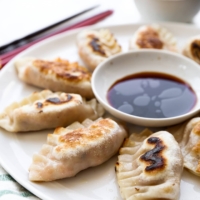
Kimchi Tofu Mandu (Korean Dumplings)
- Prep Time: 25 minutes
- Cook Time: 7 miutes
- Total Time: 32 minutes
- Yield: 20 Mandu 1x
- Category: Appetizer
- Method: Frying pan
- Cuisine: Korean
- Diet: Vegetarian
Description
Crispy on the outside and moist on the inside, these spicy and smoky Korean dumplings pair beautifully with a cold glass of beer or hot sake.
Ingredients
- 20 dumpling wrappers (small size, 3.5 inches in diameter)
- 1 tablespoon vegetable or grapeseed oil
- 3-4 tablespoons water
Filling:
- 6 ounces firm tofu, drained well and minced
- 4 ounces kimchi, finely chopped
- 1 large egg (omit for vegan recipe)
- 4 scallions, finely chopped
- 2 garlic cloves, minced
- 1 tablespoon toasted sesame oil
- 1/2 teaspoon gochugaru
- Salt and pepper to taste
Instructions
- Mix all the ingredients for the filling in a bowl and set aside.
- Transfer the filling to a skillet and cook on medium heat for 5-7 minutes, until the liquid has evaporated. Return the filling to the bowl and set aside.
- Place a wonton wrappers on a work surface.
- Take one wonton wrapper and place in the palm of your hand and scoop about 1 heaping tablespoon of the filling.
- Place the filling in the center of the wrapper and seal the dumpling by wetting the edges with a little water (dip your index finger in water and run it across the edges of the wrapper). Fold the dumpling and gently pinch the edges together (please refer to the photos in the post for a step-by-step tutorial on how to fold dumplings).
- Place the mandu on a plate and repeat until all the dumpling wrappers have been used.
- In a large skillet over medium high heat, add vegetable oil and when the oil is hot, carefully place a few mind in a row and another row next to it. Don’t overcrowd the pan! This will lower the temperature of the skillet and make the dumplings mushy. Make sure there’s enough space between each mandu so they can move a little. I usually don’t put more than 10 at a time.
- Add 3 tablespoons of water to the skillet and cover with a lid. Cook for 5-6 minutes or until the bottom of the mandu are golden brown. Flip them over and cook for an additional 3-4 minutes, until the other side is golden brown.
- Turn the heat off and transfer the mandu to a plate. Serve with Korean dipping sauce.
Steamed Mandu
- Cover the bamboo steamer with parchment paper or cabbage leaves to prevent the mandu from sticking to the basket.
- Place the mandu in the basket, making sure to leave a little space between each mandu so they don’t stick together while they steam. Cover the steamer with a lid and steam for 7-8 minutes.
- Transfer the mandu to a plate and serve with Korean dipping sauce one of my dumpling sauces.
HOW TO FREEZE UNCOOKED MANDU
If you would like to save some of the mandu you just made for later, place the fresh mandu on a plate and cover with plastic wrap. Put in the freezer and when the mandu are completely frozen, transfer them to a storage container or freezer bag. They will keep for up to 3 months.
Nutrition
- Serving Size: 1 mandu
- Calories: 20
- Sugar: 0.2g
- Sodium: 78.1mg
- Fat: 2.2g
- Saturated Fat: 0.8g
- Unsaturated Fat: 0.7g
- Trans Fat: 0g
- Carbohydrates: 5.2g
- Fiber: 0.4g
- Protein: 2g
- Cholesterol: 10mg
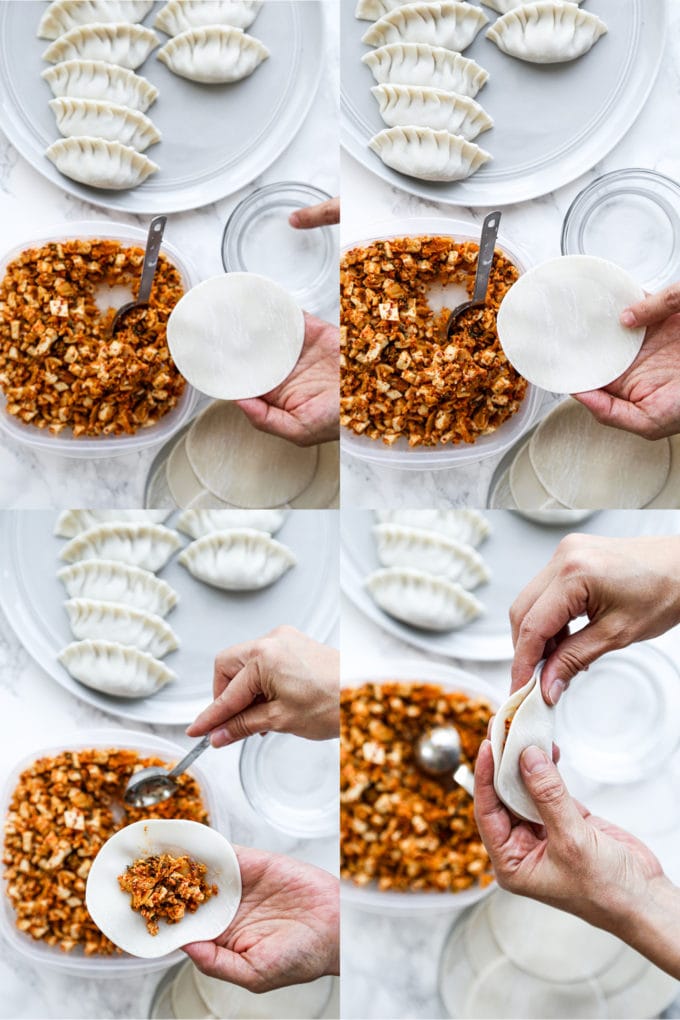
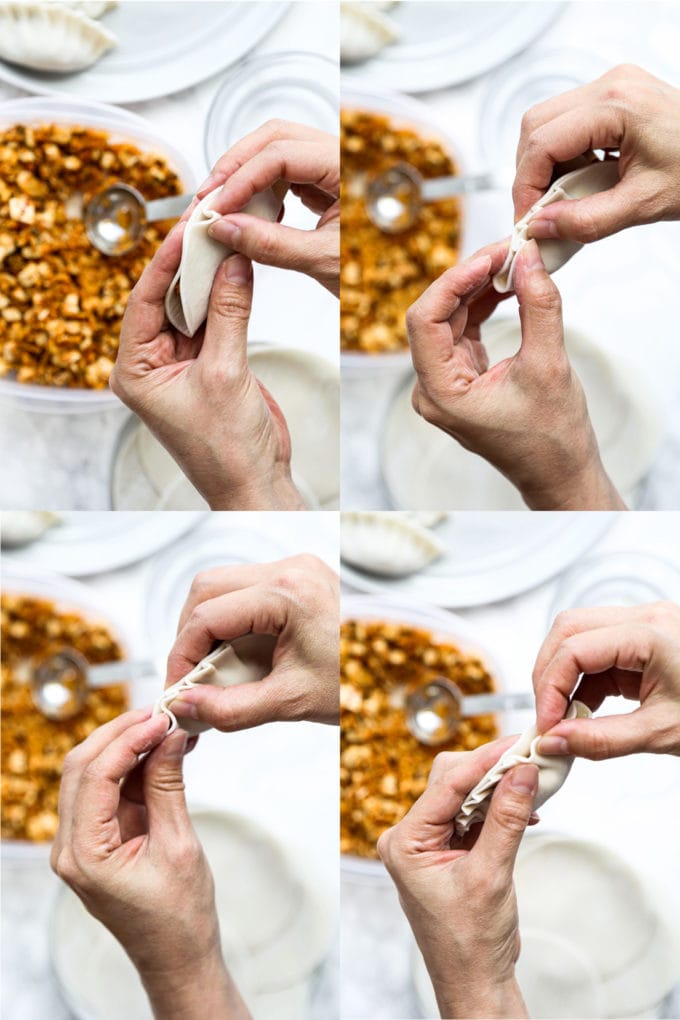
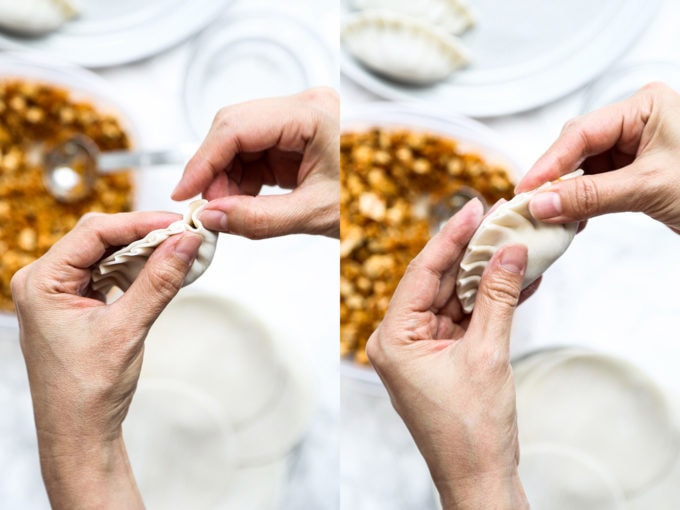
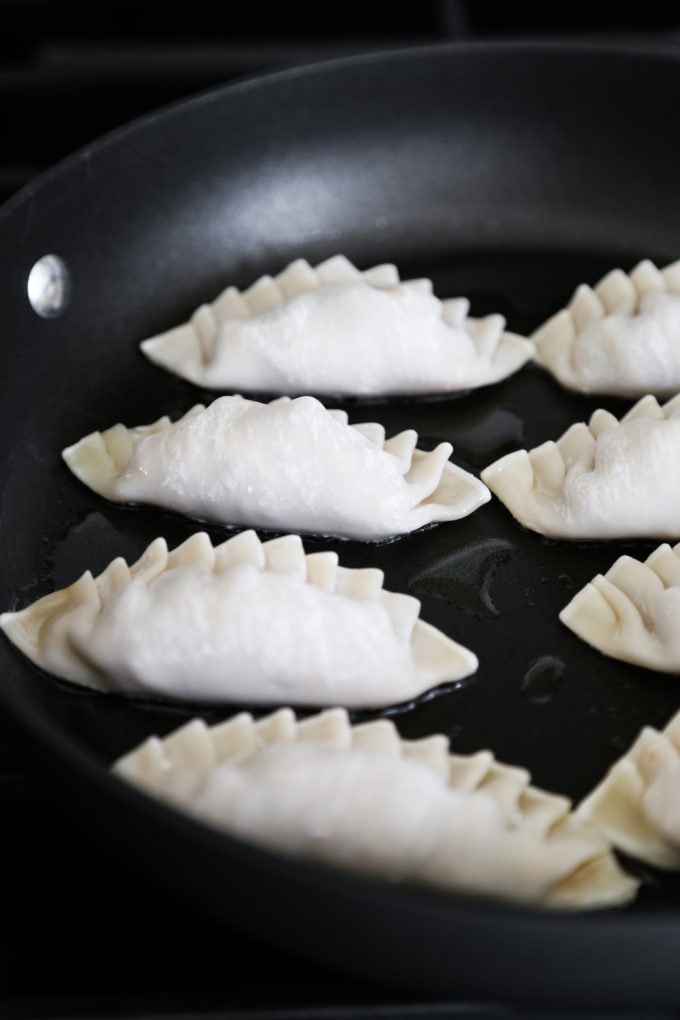
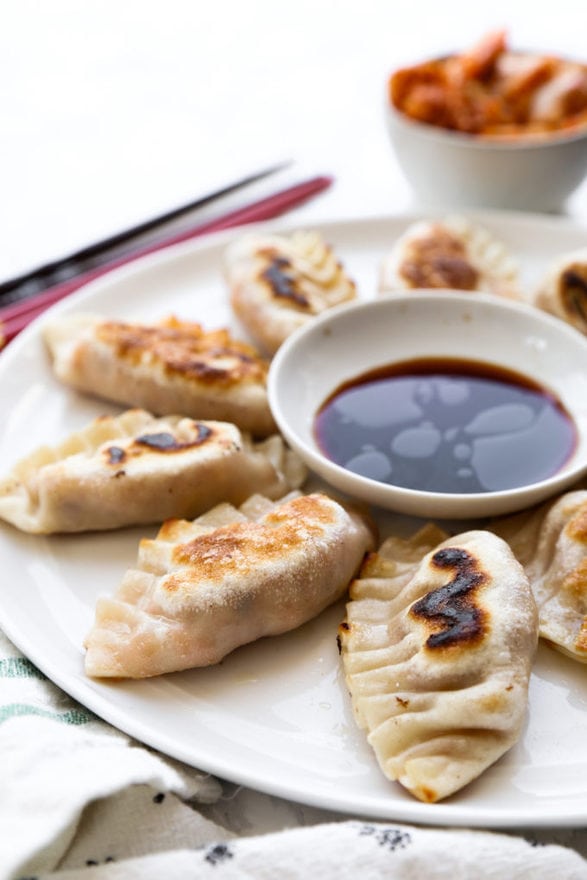
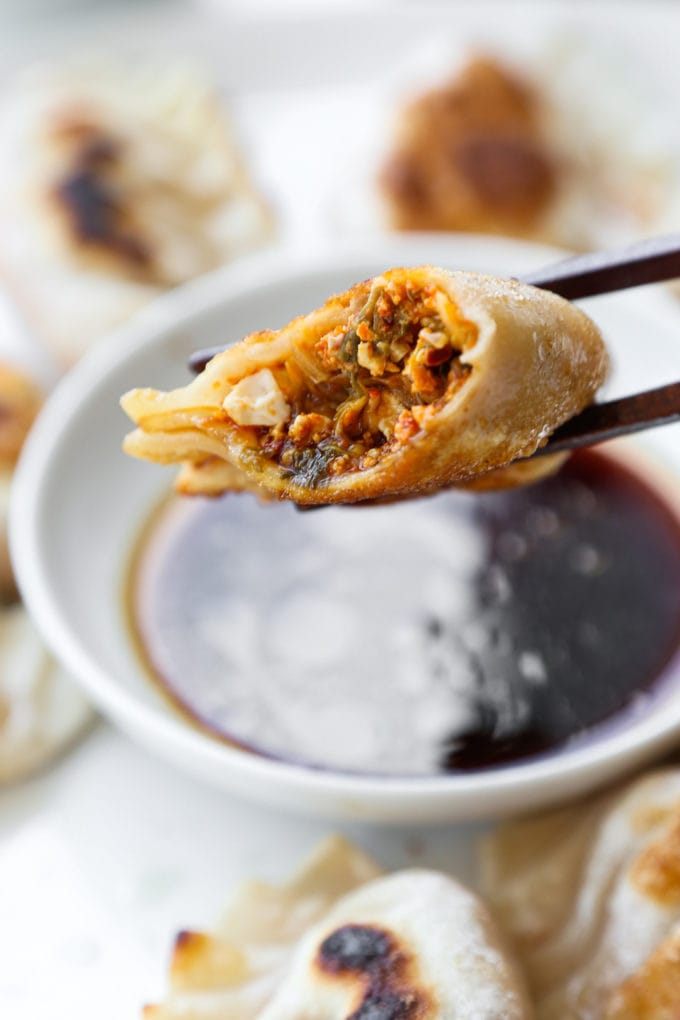















Made this recipe last week, super flavorful and filling! I did not have gochugaru, so I used (a heavy serving) of gochujang instead. I will definitely make this again.
Thank you so much Natalie! 🙂
Hi!! Do you think this can also be deep fried?
Absolutely! I haven’t tried to deep fry it but I’m guessing it’s the same temperature as regular dumplings (around 350ºF).